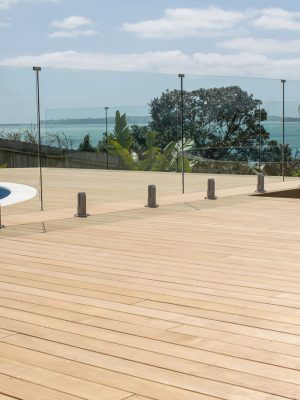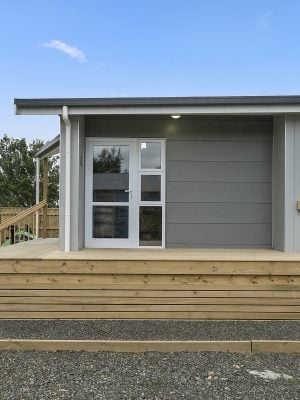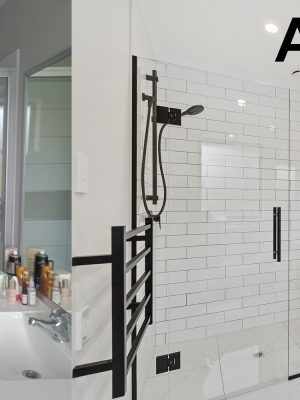A bathroom renovation is a big task and there is much to consider; from cost and layout, to timeframes. Luckily for you, our New Zealand Certified Builders Regional Presidents are here to offer you some of their best bathroom reno advice!
So, before you start your next bathroom project, read on for some handy tips, then find a local NZCB builder to help with your planning and execution.
What is your bathroom style?
First things first.Your new bathroom should complement the rest of your home. Is it classic or contemporary? Does it have a neutral palette or filled with pops of colour? The internet is your friend at this stage, as are interior and home magazines. Do your research and take your time figuring out the vibe you want. Will your bathroom need to be practical for the whole family? Or a space to relax and unwind? Or a combination of both? Knowing these answers will help lay the foundation for your decisions around fixings, wall and floor coverings.


Work out your layout
Think about how you use your bathroom, as this will help determine your layout, especially if space is tight. Do you need a bath and a shower? Or will just a shower do?
Measure the space and experiment with layouts on paper, keeping in mind that using existing plumbing can reduce overall costs. However, what is behind the walls is of high priority. To ensure longevity of both the structure and working parts of your bathroom, we recommend investing in quality brass-ware. Brass-ware has continuous water flowing through it, so it is important to use products which suit your water pressure. If you are unsure, speak with a professional.
The first decision is to work out where your toilet will be, as this plumbing is the most difficult (and costly) to move. However, ideally when you enter your bathroom you see the bath/shower or basin first, not the toilet.
NZCB Auckland President, Barbara MacGregor recommends installing an in-wall toilet cistern, and ensuring you have enough space around all your fittings to allow for comfortable use of each. Talk to your local NZCB builder about how much space is ideal and what you can achieve within your bathroom.
Once you know where the toilet will be placed, you can map out the other fittings. Barbara recommends choosing a smaller vanity and using a mirrored cabinet for additional storage. “Wall hung vanities also make a room feel more spacious as they keep the floor clear.”
Choosing a shower or bathtub is also important, ensuring which works best in your space. It should be functional and suit your lifestyle, without overwhelming the room and leaving little space for everything else. If you are putting in a shower, you’ll have to decide what type of floor you want. Regardless of whether you choose a tray or tiled floor, make sure it’s anti-slip.
Barbara says to consider making the bathroom more of a tiled ‘wet room’ so you don’t have to make space for an enclosed shower. “Alternatively plan the area so you don’t need a shower door that swings open and takes up space.” You could also choose an inward opening or a sliding shower door.
Speaking of doors, Barbara also recommends a cavity slider for your main room door, so you don’t have to allow space for the door to swing into the space.


Maximise the space you have
Being smart with storage is crucial in a small bathroom. Start by decluttering, so you know what you need in there and then create a good organisation system. Consider shifting some of your items to the linen cupboard, instead.
NZCB Nelson Bays President, Dave Gunter recommends incorporating a small section of slatted shelves to hold towels. Putting a niche into your shower creates more handy storage, too, Barbara adds.
Dave says you can also maxmise storage by adding upper wall cabinets. Just be careful as this may make a small space feel smaller if there isn’t enough light in the room.
Having enough light is key. In a smaller space, consider putting in a mirror with built-in lighting, and make sure your vanity is also well lit. Dave recommends having a skylight installed to help capture natural light, or placing a narrow high window above a vanity mirror, which means you can have your vanity and mirror on an outside wall and still maintain natural ventilation.
NZCB Taupo President, Lachie Monteith, recommends installing a small, flush-mounted wall light on a sensor in bathrooms and ensuites to avoid turning a light on in the middle of the night.
Barbara also recommends using lighter colours or high gloss tiles and paint, which bounce the light around the room. “Good ventilation is also important. Mechanical ventilation is now required in all bathrooms under the building code.”
And finally, remember to investigate power point placement, heating options and towel rail placement. Dave says heated towel rails can be fitted with a swivel type mounting if you lack space, instead of a ladder.
Budget and timelines
It is important to know what you can afford and to establish a budget. Bathroom renovations will always cost more than you want to pay, with cost dependent on materials and fixtures. Try to budget a little more than you want to spend, if you can. You can map a starting budget if you have an idea of what fixtures you want. From here, talk to your local NZCB builder and additional contractors about their costs and anything you might have missed.
In terms of timeframes for your bathroom reno, most take approximately a month, sometimes six weeks if tricky. It is always best to find a professional with good references. You’ll need a builder, a plumber and an electrician as well as possibly a tiler, so ask your local NZCB builder which sub-contractors they recommend.
Remember less is more and it is best to keep things simple when working with a small bathroom. It will look much larger if you choose small, minimalistic components. Lastly, always check with a professional as to whether consent is required for your bathroom renovation.
To find a nearby NZCB builder to help you design and build your new bathroom click here.
Photos Supplied by Franklin Plumbing.






